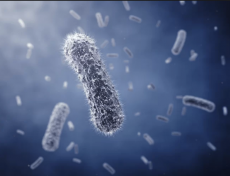

GCSE BIOLOGY REVISION: INFECTION AND RESPONSE
Please note: Text in bold is what the AQA GCSE biology specification requires an understanding of.
Bacterial disease
Salmonella food poisoning is spread by bacteria ingested in food, or on food prepared in unhygienic conditions. In the UK, poultry are vaccinated against Salmonella to control the spread. Fever, abdominal cramps, vomiting and diarrhoea are caused by the bacteria and the toxins they secrete. Gonorrhoea is a sexually transmitted disease (STD) with symptoms of a thick yellow or green discharge from the vagina or penis and pain on urinating. It is caused by a bacterium and was easily treated with the antibiotic penicillin until many resistant strains appeared. Gonorrhoea is spread by sexual contact. The spread can be controlled by treatment with antibiotics or the use of a barrier method of contraception such as a condom.
Gonorrhoea
Gonorrhoea is a bacterial sexually transmitted disease. Typically occurring to people aged 15-24, the infection is rather common. Symptoms consist of pain during urination, and forms of thick yellow or green discharge from the penis or vagina. If left untreated, then this can lead to infertility. Infection can be prevented through abstinence from anal and oral sex, and using barrier contraception like condoms for vaginal sex. Antibiotic treatment can be given; however, scientists believe that one day antibiotic treatment will be ineffective.
Salmonella
Salmonella is bacteria that causes food poisoning. Symptoms consist of abdominal cramps, vomiting and diarrhoea. Salmonella can be found in undercooked meats, egg and poultry or reheated foods that have not been heated properly. It can also be found in unhygienic kitchens. To prevent the spread of the bacteria all poultry in the UK are vaccinated and we are educated about the importance of handling meat correctly and cooking it sufficiently. We also know to keep surfaces clean and to wash our hands after touching meat.
Protist disease
The pathogens that cause malaria are protists. The malarial protist has a life cycle that includes the mosquito. Malaria causes recurrent episodes of fever and can be fatal. The spread of malaria is controlled by preventing the vectors, mosquitos, from breeding and by using mosquito nets to avoid being bitten.
Protoctista are eukaryotic organisms that have a nucleus.
Malaria
The vectors which carry and spread malaria are mosquitoes. The protist which causes malaria is Plasmodium. Malaria carrying mosquitoes are found particularly in tropical climates, such as parts of Asia, Africa, South and Central America. Malaria is not found in the UK. Mosquitoes spread malaria through sucking infected blood and then sucking another person’s blood. Mosquitoes are called vectors because they do not become ill, they just transmit the disease. Symptoms of malaria consist of fever, chills, sweats, headaches, vomiting and diarrhoea. Each year, approximately 200 million people are infected with malaria, up to half will die from it. There is no vaccination for malaria but there are antimalarial tablets given to people who travel into malarial zones to prevent or treat the symptoms of malaria. Infection can be prevented by stopping individuals form being bitten, such as using insect repellent or mosquito nets.
image- https://www.livescience.com/51641-bacteria.html

0 Comment:
Be the first one to comment on this article.